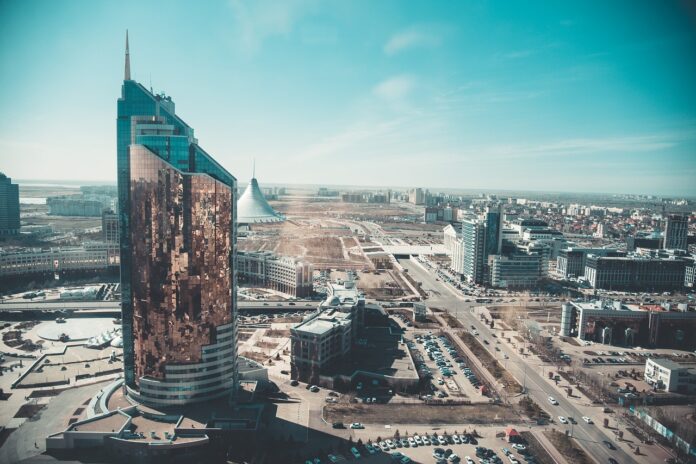25 Interesting Facts About Kazakhstan
- Location and Borders: Kazakhstan is located in Central Asia. It is bordered by Russia to the north, China to the east, Kyrgyzstan to the southeast, Uzbekistan to the south, and Turkmenistan to the southwest. It is a landlocked country with vast steppes and desert regions.
- Square: The country covers an area of approximately 2.72 million square kilometers, making it the largest landlocked country in the world and the ninth largest overall.
- National Currency: The currency of Kazakhstan is the Kazakhstani Tenge (KZT).
Interesting Facts About Kazakhstan:
- Currency and Prices: Prices in Kazakhstan are expressed in tenge, which are relatively low for tourists. For reference, 1 Russian ruble is approximately 5 tenge.
- Lake Balkhash: Located in southeastern Kazakhstan, Lake Balkhash is unique because it has both fresh and saline sections. The eastern half of the lake is fresh water, while the western half is salty.
- Historical Capital: Although Astana (now known as Nur-Sultan) is often thought to be a modern city built from scratch, it has nearly a 200-year history. During Soviet times, it was known as Tselinograd.
- Horse Domestication: Anthropologists believe that the ancestors of modern Kazakhs were the first to domesticate horses in human history, a significant milestone in human development.
- Family Traditions: Family relationships are highly esteemed in Kazakhstan, with modern Kazakhs often being able to name their relatives up to the 5th or 7th generation.
- Naval Fleet: Despite being landlocked, Kazakhstan’s naval fleet operates on the internal waters of the Caspian Sea.
- Rich Resources: Kazakhstan is a major resource-rich country, with almost the entire periodic table of elements found within its borders. It holds about 50% of the world’s tungsten reserves and 20% of the world’s lead and uranium reserves.
- Multicultural Society: The country is incredibly diverse, with numerous ethnic groups and regular cultural events and themed evenings throughout the year.
- Modern Architecture: In Astana, there is an opera and ballet theater built by a Swiss company following an Italian architect’s design. It resembles Moscow’s Bolshoi Theatre.
- Space Exploration: Kazakhstan is the birthplace of significant space achievements; the first artificial Earth satellite, Sputnik 1, and the first human in space, Yuri Gagarin, were launched from Kazakhstan’s Baikonur Cosmodrome.
- Administrative Divisions: Kazakhstan’s administrative structure includes 14 regions and 2 cities of republican significance: Astana (Nur-Sultan) and Almaty.
- Cold Capital: Nur-Sultan (Astana) is one of the coldest capitals in the world, ranking second only to Ulaanbaatar, Mongolia.
- Olympic Request: Kazakh athletes once petitioned the International Olympic Committee to allow horse meat at the London 2012 Olympics, reflecting local culinary traditions.
- Currency System: Independent Kazakhstan was among the first of the CIS republics to establish its own currency system. The first banknotes were printed in the UK and later in Germany.
- World’s Largest Tent: Astana is home to the world’s largest tent, a shopping and entertainment center with a total area of 127,000 square meters and a height of 150 meters. It is one of the top ten most environmentally friendly buildings globally.
- Diverse Landscapes: The natural scenery of Eastern Kazakhstan is breathtaking, with mountain landscapes transitioning to meadows, coniferous forests, and lakes within just a few kilometers.
- Nuclear Disarmament: Kazakhstan has a unique position on nuclear weapons, voluntarily renouncing their use on its territory despite possessing the fourth-largest nuclear arsenal in the world.
- Ferris Wheel: The Ferris wheel in Nur-Sultan is more than just an attraction; it has become a symbol of the city for the past two years.
- Cultural Festivals: Kazakhstan hosts various cultural festivals throughout the year, including the Nauryz Meyrami, a celebration of the Persian New Year, and the Shymkent International Film Festival.
- Great Steppe: Kazakhstan is home to the vast Eurasian Steppe, one of the world’s largest and most continuous grassland regions. It stretches from Mongolia to the eastern parts of Europe.
- Mausoleum of Khoja Ahmed Yasawi: Located in Turkestan, this UNESCO World Heritage Site is an important pilgrimage site and an architectural marvel of the Timurid era.
- Kazakh Language: Kazakh is a member of the Turkic language family and is written in the Cyrillic script, though there are plans to transition to the Latin alphabet by 2025.
- Caspian Sea: The Caspian Sea, the world’s largest inland body of water, borders Kazakhstan. It is a significant resource for oil and gas production.
- Cultural Heritage: Kazakhstan’s cultural heritage includes the practice of eagle hunting, a tradition still alive today and recognized by UNESCO as an Intangible Cultural Heritage of Humanity.
- Unique Wildlife: Kazakhstan is home to several unique wildlife species, including the endangered saiga antelope and the elusive snow leopard, which are found in the country’s diverse habitats.
